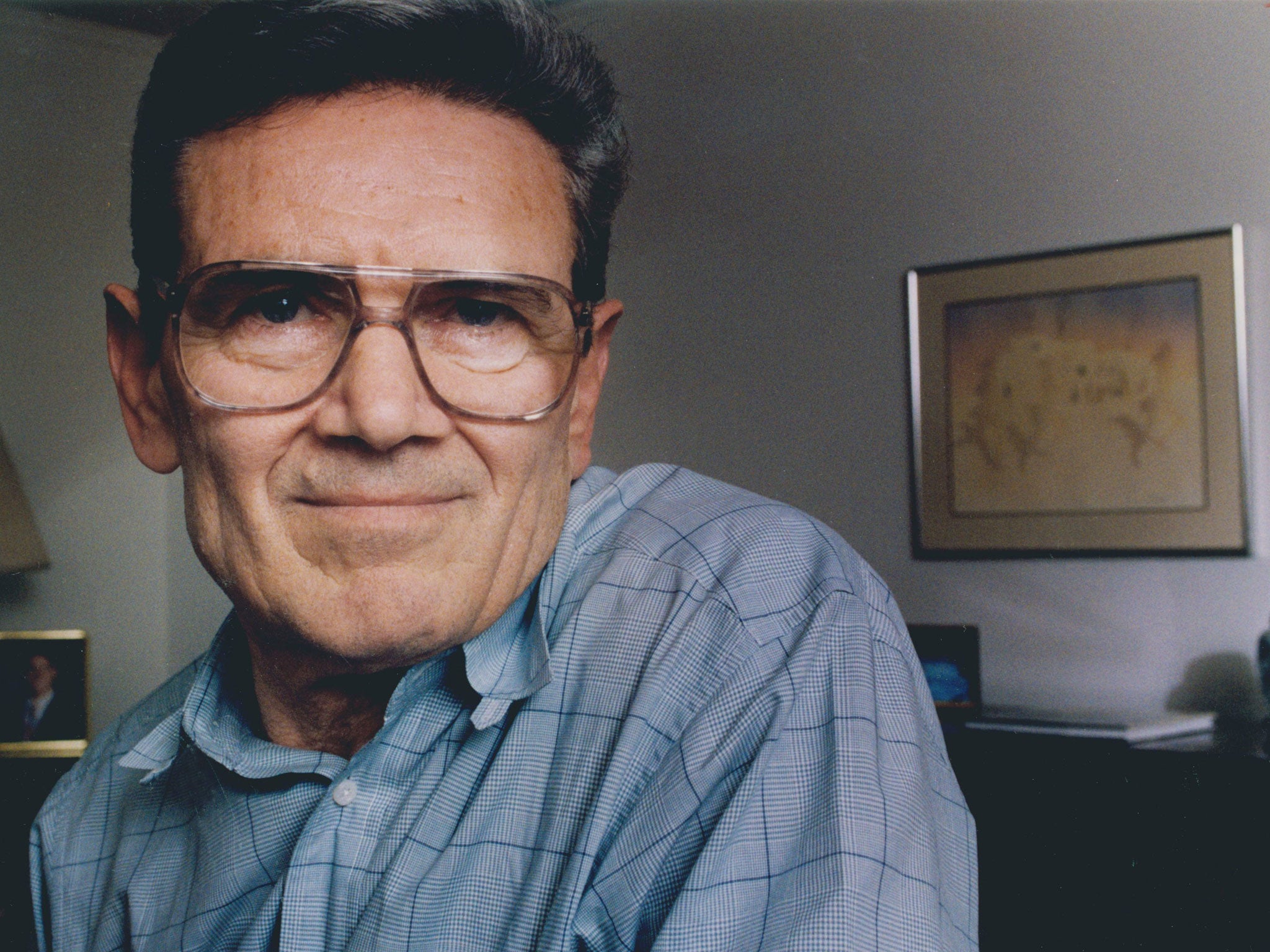Leon Leyson: The youngest worker to be saved by Oskar Schindler

Leon Leyson was the youngest worker on Schindler's List. He was nearly 10 when Germany invaded Poland in 1939. He lost two brothers during the Holocaust but was protected by Oskar Schindler, in whose factory he was working, at the age of 13.
Born Leib Lejzon in 1929, he was the youngest of five children born in Narewka, Poland to one of 800 Jewish families in this small town. Its other inhabitants were Polish and Ukrainian Catholics and Russian Orthodox Christians. Life was tough, with no electricity or running water, and the family moved to Krakow, formerly an Austrian city, and a thriving industrial and cultural centre. Leon's father worked in a glass factory and Leon attended the local state school. The city was an important centre for Polish Jews, with between 60,000 and 70,000, from the Orthodox, Chasidic and Reform traditions.
During the German invasion in September 1939, the city of 321,000 largely escaped the worst ravages. However, it became Krakau again, and headquarters of the German administration headed by the notorious Nazi lawyer, Dr Hans Michael Frank. He started to clear the traditional Jewish quarter of Kazimierz and set up a Jewish ghetto in Podgorze, a suburb of Krakow.
Within six months the Leysons had been forcibly removed to the ghetto and allocated a shared one-bedroom apartment. Deportations to Auschwitz and elsewhere soon started; Gauleiter Frank was determined to make the city Judenfrei. Leon, who had some narrow escapes, lived in the ghetto with his family from 1940 to 1943, then worked in a forced-labour camp in Plaszow until 1944. Meanwhile, his relatives, along with the other Jews in Narewka, were being murdered.
Luckily for Leon Leyson, the Sudeten German businessman and former Wehrmacht secret agent, Oskar Schindler, took over an enamelware factory from the bankruptcy court and persuaded the labour office, with the help of his German-speaking Jewish accountant, Itzhak Stern, to allow him to employ cheap Jewish labour. Through social contacts with leading local Nazi officials, Schindler had a degree of freedom. He was arrested three times on suspicion of black market trading and other offences but through bribery was able to avoid further investigation. Leon Leyson, along with his parents, became one of Schindler's workers, one of the 1,100 or so that owed their lives to him.
Leon worked 12-hour shifts along with the adults, but Schindler doubled his rations when he saw how weak he was and took him off the line when his eyesight began to falter. He added Leyson's mother and surviving siblings to his famous list.
As the Reich cracked, Leon was moved with others to the Gross-Rosen concentration camp in Germany, and then to Brinlitz in Czechoslovakia, where Schindler had taken over an arms factory. In May 1945 the Soviet Army arrived and the Jewish workers were liberated. Schindler and his wife escaped to the US zone of Germany. Frank was convicted at Nuremberg and hanged. Shortly before his death he repented and returned to the Catholicism of his childhood.
After several failed business ventures, Schindler died, destitute, in hospital in 1974, at the age of 66. In 1949, at the age of 20, his protégé Leon Leyson had emigrated to the US and served in the Army during the Korean War. After demobilisation he made use of his knowledge of industrial production, studying industrial arts at Los Angeles City College and California State University, achieving an MA in education from Pepperdine University, near Malibu, in 1970. For more than 40 years he taught at Huntington Park High School in Los Angeles. He retired in 1997 but continued giving talks about his experiences.
Leyson, who died of lymphoma, saw Schindler for the last time just before he died in 1974. He was on a visit to Los Angeles and Leyson joined the group who greeted him at the airport. He recognised Leyson immediately.
David Childs
Leib Lejzon (Leon Leyson), teacher: born Narewka, Poland 15 September 1929; married 1965 Lis (one son, one daughter); died Fullerton, California 12 January 2013.
Join our commenting forum
Join thought-provoking conversations, follow other Independent readers and see their replies
Comments
Bookmark popover
Removed from bookmarks